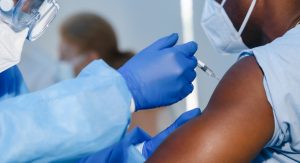By Michael Cushing,MD
Shoulder Specialist,
Georgia Bone and Joint
The shoulder is the most commonly dislocated joint in the body. Shoulder dislocations occur more commonly in younger patients. Traumatic shoulder dislocations are common in contact or collision sports, like wrestling, football and basketball. These injuries are usually easy to diagnose, since the shoulder and arm look abnormal because the ball slides completely out of the socket. Patients present with severe pain and loss of motion.
Historically, shoulder dislocations were not thought to be a big concern. An athlete would present to the emergency room and the shoulder would be reduced. He would be placed in a sling for 6 weeks and be told he would be fine. However, more recently (last 10 years)doctors have questioned this approach. Many studies have shown that in athletes under age 20, after an initial dislocation recurrence rates are extremely high, close to 90-95%.
The reason for the high recurrence rate is due to structural damage that occurs at the initial dislocation. Usually the labrum, a cartilage bumper surrounding the glenoid, is torn off the glenoid. The capsule which surrounds the shoulder joint is stretched or torn as well. Because of this damage, the shoulder dislocates with increasingly less force each time.
Management of a first time shoulder dislocation is evolving. Emergent reduction is necessary, by an on site athletic trainer, or in the emergency room. After reduction, the athlete is place in a sling. In the last 5 years, we have been using a special sling (external rotation brace) for 3-4 weeks, followed by physical therapy and this has reduced the recurrence rate from 95% to around 60%. Consulting a surgeon who frequently treats this injury is appropriate. Typically, these injuries occur during a sports season, ideally a period of immobilization and physical therapy will help lessen the chance of further dislocations and allow the athlete to finish the season. If the athlete has multiple dislocations during the season, then surgical stabilization will be required.
Surgery has become much less invasive. Most of the time, arthroscopic procedures (2-3 small incisions) are successful at preventing recurrence and allowing the athlete to return to sports. Typically, the surgery involves repairing the labrum and tightening the capsule and ligaments. While the surgery is less invasive, the rehabilitation is still lengthy. The recovery process takes 4-6 months to regain motion and strength, while preserving stability to the shoulder.
Shoulder dislocations are a difficult problem facing athletes in contact sports. However, if nonoperative treatment is unsuccessful, or if the athlete wants to minimize the chance of recurrence, minimally invasive surgical options are available.
For more information, call 770-502-2158 or visit www.georgiaboneandjoint.org








Leave a Comment
You must be logged in to post a comment.